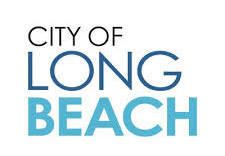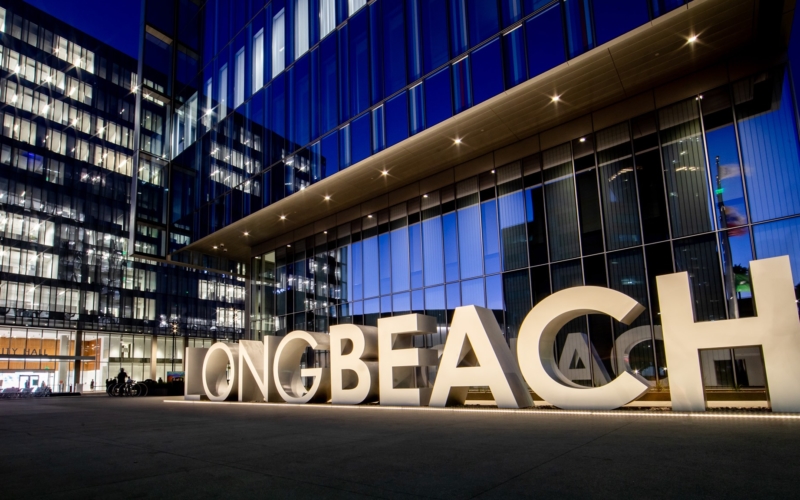 As part of the Long Beach Airport’s (LGB) ongoing sustainability efforts to reduce waste and greenhouse gas emissions, it has launched a commercial food scrap recycling program to divert organic materials from the landfill and create renewable energy.
As part of the Long Beach Airport’s (LGB) ongoing sustainability efforts to reduce waste and greenhouse gas emissions, it has launched a commercial food scrap recycling program to divert organic materials from the landfill and create renewable energy.
“Long Beach already has the best airport in the country and programs like this help us be responsible stewards of our environment as well,” said Mayor Robert Garcia. “This program is another step forward in helping the City achieve our overall sustainability goals.”
Launched in late 2021 in collaboration with the Department of Public Works Environmental Services Bureau, LGB tenants and business partners, such as airport concessionaire manager Paradies Lagardere, the program is expected to divert 20% of the food scrap that otherwise would be wasted.
Here’s how it works:
- Food scraps, including meat, dairy, bread, vegetables, fruits, eggs, coffee grounds, cheese, pasta and other organic materials, are sorted from other solid waste and placed in 95-gallon bins located behind the north and south concourses.
- City Refuse picks up the food scraps weekly for delivery to the Puente Hills Materials Recovery Facility (MRF) for processing.
- Once at MRF, the waste is treated, and the slurry is pumped into tanks and shipped to a wastewater treatment plant managed by the Los Angeles County Sanitation District.
- At the plant, the slurry is converted into biogas, which is a renewable energy source, through anaerobic digestion, and the biosolids from that process can be used as fertilizer.
Public Works began initiating commercial food scrap collection programs in Long Beach last year to support businesses that soon will be required to divert organic waste in accordance with State guidelines. California Assembly Bill 1826 mandates that all commercial operations divert organic waste and is further enforced in State Senate Bill 1383, which establishes statewide targets to achieve a 75% reduction of organic waste and recover at least 20% of edible food for human consumption by 2025.
LGB concessionaire Paradies Lagardere has been donating edible food to local nonprofit organization Food Finders for several years. Between 2016 and 2019, Paradies donated approximately three tons of edible food to help fight food insecurity in local communities.
Over the last five years, LGB also diverted an estimated five tons of green waste from landfills through landscape maintenance practices that create and utilize mulch on the airport’s grounds.
“We are so proud of the collective work done with the City and LGB’s business partners to implement this innovative back-of-house food scrap program ahead of the State’s schedule,” said Airport Director Cynthia Guidry. “While we’ve long been known for delivering one of the best passenger experiences in the nation, LGB also is Airport Carbon Accredited (ACA) with a well-earned reputation as an industry leader in sustainability.”
ACA-certified by Airports Council International (ACI), LGB participates in a voluntary, worldwide carbon management program that helps airports identify, manage and reduce their carbon emissions. LGB’s carbon management plan includes pledges to reduce emissions from 2016 levels, on a per passenger basis, by 20% in 2025 and 40% in 2030. City leaders have set a goal for the airport to eventually become a carbon-neutral facility, with various efforts underway to achieve that, including the installation of two large solar arrays on top of Parking Structures A and B expected to be completed this year.
For more information about LGB Green Airport initiatives, follow the Long Beach Airport on social media or visit lgb.org.
About the City of Long Beach
Home to approximately 480,000 people, the multiple award-winning and innovative City of Long Beach offers all the world-class amenities of a large metropolitan city while maintaining a strong sense of individual and diverse neighborhoods nestled together along the California coast. As a full-service charter city, Long Beach is home to the Queen Mary, Aquarium of the Pacific, several museums and theaters, a highly rated school district, Long Beach Airport and the Port of Long Beach. The City also has a highly respected university and city college, two historic ranchos, five hospitals, five golf courses, 171 parks, miles of beaches, marinas and bike paths.
For more information about the City of Long Beach, visit http://longbeach.gov/. Follow us on social to keep up with the latest news: Facebook, Twitter, Instagram and YouTube.
About Long Beach Airport
Founded in 1923, Long Beach Airport (LGB) is the oldest airport in California. Among its many awards, LGB was named a Top 10 airport in the 2020 USA Today 10Best Readers’ Choice travel award contest for Best Small Airport. LGB offers non-stop service to several U.S. cities while supporting a healthy general aviation community with more than 300,000 annual operations. The airport is also a source of substantial economic activity and employment, with the LGB Aviation Complex generating $8.6 billion in economic impact and supporting 46,000 jobs. LGB is a self-supporting enterprise of the City of Long Beach and does not receive local tax dollars. The Airport prides itself in preserving its esteemed historic legacy and maintaining a safe, sustainable, and environmentally responsible operation. Follow us on Facebook, Instagram and Twitter @LGBAirport.





